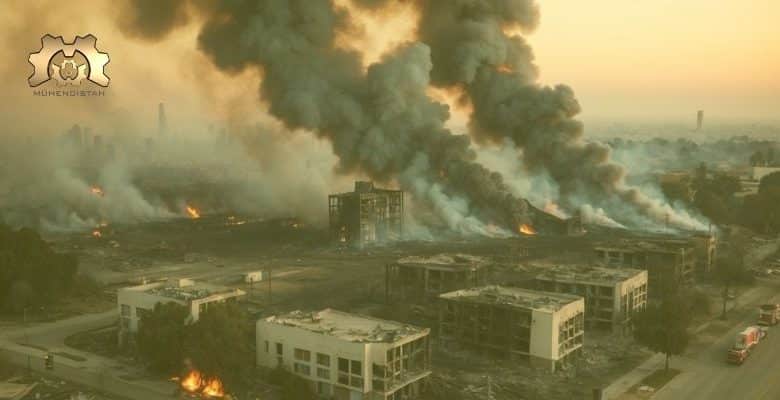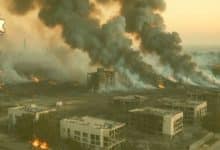How Much Will It Cost to Rebuild Los Angeles After the Wildfires? An Analysis of Financial Implications and Recovery Strategies

The wildfires in Los Angeles have caused significant damage, leaving many homes and businesses in ruins according to the research done by Red Turtle Roofing. Rebuilding the city is expected to cost anywhere from $200,000 to over $1.2 million per home, along with millions more for infrastructure repair. As communities face the daunting task of recovery, understanding the costs associated with rebuilding is crucial for homeowners and policymakers alike.

With over 15,000 structures affected, the economic impact on Los Angeles is profound. Residents must navigate insurance claims, government aid, and personal finances to determine their next steps. Each home presents unique challenges, but effective rebuilding strategies can help reduce expenses while ensuring safety and quality.
As Los Angeles moves forward from this crisis, the emphasis on clear rebuilding plans and a realistic understanding of costs will be vital. Stakeholders must be prepared both financially and logistically to address the extensive road ahead.
Key Takeaways
- Rebuilding costs for homes in Los Angeles range significantly due to wildfires.
- The economic impact of the wildfires extends beyond individual homes.
- Effective strategies can help manage rebuilding expenses and safety.
Economic Impact and Rebuilding Costs

The wildfires in Los Angeles have led to significant economic challenges. The effects on home values, insurance claims, and rebuilding costs are crucial for homeowners and the community.
Assessing the Economic Toll of Wildfires
Wildfires impose a heavy economic burden. Estimates suggest that the total economic loss could reach $250 billion to $275 billion. This loss encompasses damaged homes, infrastructure, and businesses.
Homeowners face difficulties as property values fluctuate post-disaster. Multi-million-dollar homes experience sharp decreases in value. The rebuilding process only adds to this financial strain, potentially stalling growth in affected areas.
However, the local economy often sees positive impacts from rebuilding efforts in the long run, as workforce demand increases.
Insurance Claims and Home Value Considerations
Insurance coverage plays a vital role in recovery. Many homeowners depend on insurance to help them rebuild. However, coverage amounts can vary widely.
Understanding the difference between replacement cost and market value is key. For example, rebuilding a home may cost $200,000 to $1,200,000+, depending on location and home size. High-value homes may not receive full coverage, leading to financial gaps for homeowners.
Insurance premiums may also rise after a disaster, making it harder for residents to keep up.
Projected Costs of Rebuilding Infrastructure
Rebuilding infrastructure is a critical but costly task. The expenses will likely extend beyond home reconstruction. Many areas need updates to public utilities, roads, and emergency services.
Costs associated with rebuilding infrastructure can escalate quickly. Experts estimate spending could reach millions, alongside individual rebuilding efforts.
Labor availability is also a key concern. A recent report noted the labor force in construction faces challenges, with unemployment rates around 4.6%, further complicating rebuilding timelines.
In summary, these factors contribute to significant barriers for recovery. The focus on rebuilding both homes and infrastructure will shape the future economic landscape of Los Angeles.
Rebuilding Strategies and Considerations

Rebuilding after wildfires requires careful planning and consideration of various factors. Homeowners can benefit from using fire-resistant materials, factoring in future climate risks, and knowing available financial resources.
Incorporating Fire-Resistant Materials and Construction
Using fire-resistant materials is essential in wildfire-prone areas. Homeowners should consider materials such as stucco, brick, and metal roofing. These options provide better protection than traditional wood siding.
Building codes often require fire-resistant designs, especially within designated zones. Upgrading windows to double-pane glass can also help withstand flames and heat. Additionally, incorporating non-combustible landscaping and defensible spaces around the home can further reduce risk.
Cost of Fire-Resistant Materials
| Material | Estimated Cost per Square Foot |
|---|---|
| Stucco | $6 – $10 |
| Metal Roofing | $8 – $12 |
| Brick | $15 – $30 |
Choosing the right materials can balance safety and cost.
Planning for Future Wildfires and Climate Resilience
Planning for future wildfires means understanding local building codes and land use regulations. Opting for designs that minimize fire hazards can save money in the long run.
Energy-efficient systems can also play a role in resilience. These systems reduce utility costs and support sustainability. Installing firebreaks and choosing landscaping that doesn’t easily catch fire can further protect properties.
Homeowners should engage in community planning efforts. These initiatives can increase awareness and preparedness for wildfires.
Financial Aids and Resources for Wildfire Victims
Wildfire victims can access various financial resources. Insurance claims can cover part of the rebuilding costs, but homeowners must understand their policies. Some may have additional coverage for wildfires.
Grants from state and federal programs can also assist in rebuilding efforts. These funds may help with adding fire-resistant construction features.
It’s crucial to explore community resources and non-profit organizations focused on recovery. They can provide guidance on navigating the rebuilding process while maximizing available assistance.
Being informed about options helps homeowners take appropriate steps in the recovery journey.
Frequently Asked Questions
Rebuilding after the wildfires in Los Angeles raises important questions about costs, timelines, and available resources. This section addresses common inquiries regarding construction expenses, economic impacts, and support for affected individuals and businesses.
What are the average construction costs for residential properties affected by the LA wildfires?
Construction costs for homes in Los Angeles can vary widely. For instance, in areas like Pacific Palisades, rebuilding a home may cost significantly more due to higher property values. Overall, homeowners should expect costs to align with current market rates for labor and materials.
What is the projected timeline for the reconstruction efforts following the Los Angeles wildfires?
The timeline for reconstruction can take several months to years, depending on the damage severity and resource availability. Officials and contractors are working to accelerate processes where possible, but unforeseen challenges may impact overall timing.
What are the financial impacts of the LA wildfires on local businesses and the economy?
The wildfires have posed a major challenge for the local economy. Insured losses might exceed $20 billion, impacting businesses significantly. Many companies face disruptions that could hinder recovery efforts for some time.
What funding and resources are available to victims rebuilding post-wildfire in Los Angeles?
Victims of the wildfires may access various funding options. These can include federal assistance, grants, and low-interest loans. Local organizations may also offer support to help with recovery efforts.
How do insurance policies factor into coverage for properties damaged by the LA fires?
Insurance coverage can vary based on individual policies. Homeowners are encouraged to review their plans to understand coverage limits, deductibles, and any exclusions. Having a clear idea of policy details helps in the claim process.
What steps are being taken to mitigate future wildfire risks in Los Angeles reconstruction plans?
Future reconstruction plans include measures to reduce wildfire risks. These may involve updated building codes, improved landscaping practices, and better community planning. Efforts aim to create safer environments for residents in fire-prone areas.
